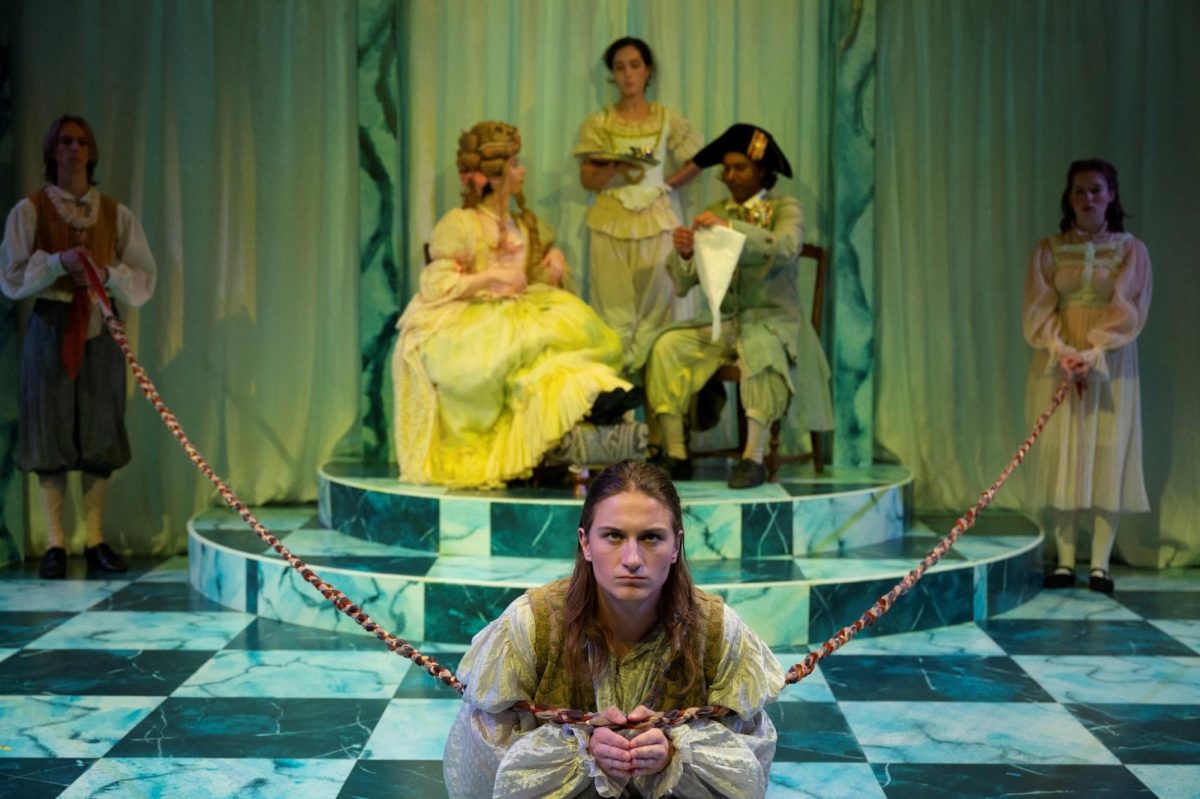Changes in lighting are used to alter the mood of the scene, and the minimal color variety used for the set of Santa Rosa Junior College Theatre Arts’s production of “Orlando” magnified that effect significantly. This, alongside a strong presentation and acting, made “Orlando” a unique show worth seeing.
“Orlando” tells the story of a British nobleman who goes on a journey of transformation and self-discovery, learning about what it means to love and how gender roles have differed over time.
Most theater shows are told through dialogue and actions with the occasional single narrator. In “Orlando,” the story is told through dialogue interspersed among the narration done by the entire cast alongside their actions.
The drivers of this narration were each cast member designated as Chorus.
With the exception of the titular lead, every other character is played by an actor who transforms as part of the Chorus. Unlike the traditional meaning of “chorus” in terms of musical theater, these Chorus actors did not sing; instead, they effectively filled roles needed by the current scene while telling the story, oftentimes speaking in unison. Their transformations varied significantly.
These transformations not only showed off the actors’ skills but also, through coordination and the use of props, allowed for the simplistic and static set to transform into a variety of locales. These ranged from the interior of a house, to the bow of a ship or even to a busy street.
In general, the named characters all effectively used a variety of accents. When an actor played a character, they had an accent accurate to where the character was from. Meanwhile, Chorus members kept with the actor’s natural voice. This differentiation did a great job clearly distinguishing which actor was playing a character audiences should be paying attention to, and who was a narrator telling the story.
Lizzy Bies as the titular character, Orlando, did a brilliant job showing her acting prowess as the only cast member to play a single character. From the wide range of expressive facial acting to the consistent British accent, Bies managed to stand out among the rest of the cast as they all demonstrated their ability to transform into different people.
While the rest of the cast did an impressive job as both their characters and the Chorus members, two actors stood out from the rest.
Logan Witthaus made a hilarious first impression when opening the show as William Shakespeare. He perfectly established the show’s comedy right at the start and managed to adapt to the tone required for each of his parts throughout the entire play.
Jean-Colin Cameron didn’t do much to stand out as a part of the Chorus, but made up for it in spades with his performance as the exuberant Queen Elizabeth I. Cameron excelled with his body language and delivered his lines in a flamboyant manner that contributed greatly to the comedy.
There isn’t much to say in terms of negatives about the show. That said, some moments that were clearly supposed to be sad or melancholic felt overshadowed by the comedic ones.
Regardless, “Orlando” proved to be another high quality production by SRJC Theatre Arts. While the show’s comedy may have overshadowed the more serious parts, the less comedic moments were still noticeable. Thanks to the impressive acting, the unique presentation and the wonderful comedy, “Orlando” is very much worth seeing.




